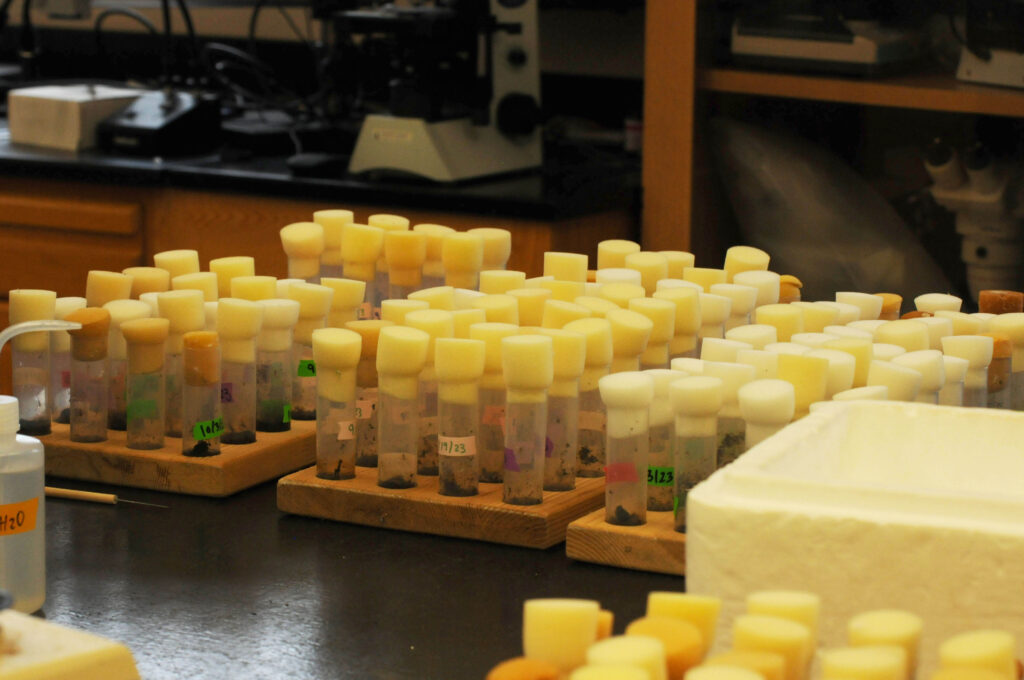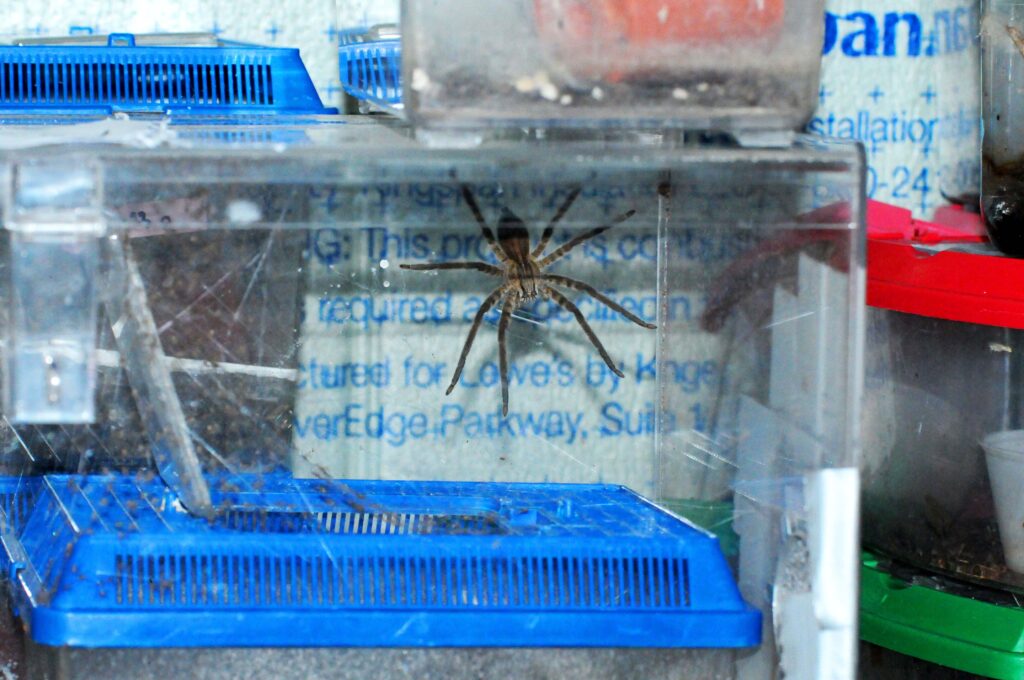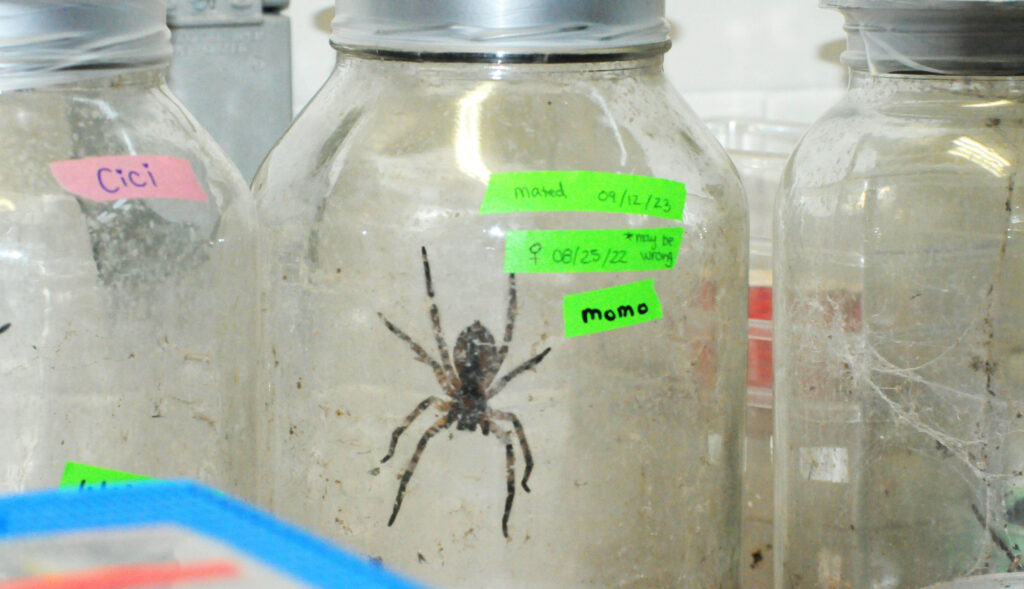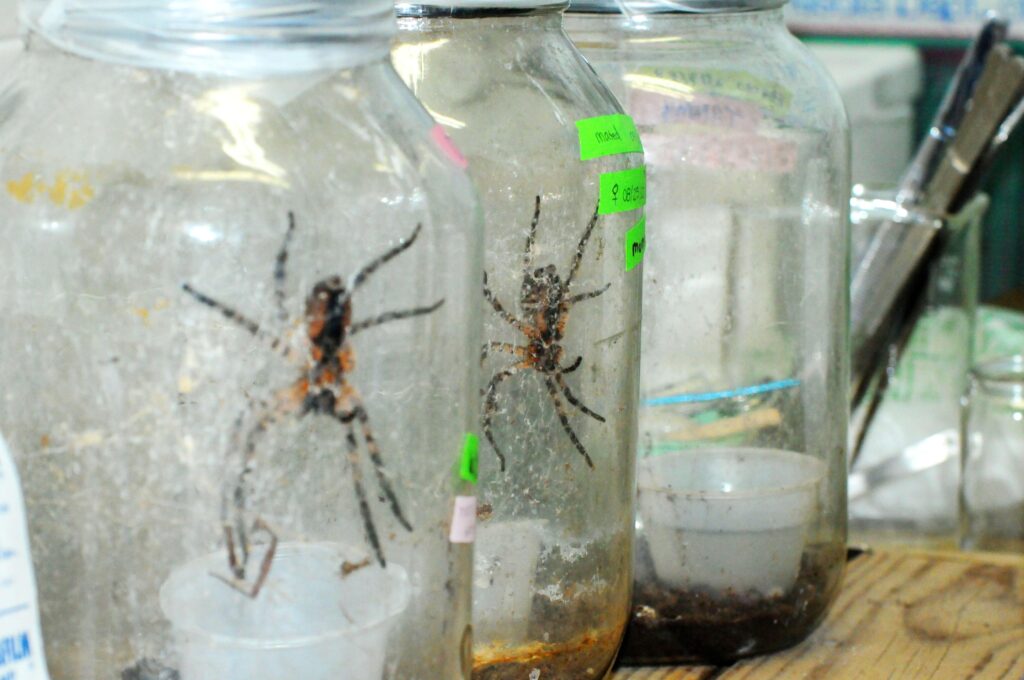




Izzy Quam/equam@mail.smcvt.edu/News & Features Editor/Photos by Tess Curran.
Few people are excited to see spiders. Two professors at St. Michael’s College are very excited about spiders.
Ruth Fabian-Fine, director of the neuroscience program and associate professor of biology and neuroscience, and Adam Weaver, director of health science and associate professor of biology and neuroscience have been conducting research on neurodegeneration in spiders.
“What we have identified is that spiders also struggle with neurodegeneration, just like humans do, and it is very difficult in humans to identify the underlying causes for neurodegeneration, which is what we looked at in spiders,” Fabian-Fine said.
Neurodegeneration is the loss of neurons in the central nervous system or the peripheral nervous system. In humans, neurodegeneration is related to diseases such as Alzheimer’s, Parkinson’s, and amyotrophic lateral sclerosis (ALS).
Fabian-Fine and Weaver have identified a mechanism that is responsible for the death of neurons in the spider. By teaming up with the University of Vermont Medical Center, they gained access to Alzheimer’s patients shortly after they died. They wanted to see if a similar mechanism can be observed in the brains of Alzheimer’s patients, Fabian-Fine explained.
They found that the human brain mechanism is similar to the spiders.
“We have just submitted a paper where we show the similarities and propose another mechanism for neurodegeneration in both the spider and the human system,” Fabian-Fine said.
Fabian-Fine and Weaver said that some symptoms of neurodegeneration in spiders are similar to symptoms in humans, such as abnormal posture and a reduced appetite.
As a research subject, spiders are valuable because the symptoms occur in two to three years rather than 70 or 80 years in humans, Weaver explained. As a result, researchers can identify and study the process much earlier.
“We can see where the degeneration starts, and that is what we can’t do in humans,” Fabian-Fine said.
The spider model system has been a key aspect to the research. “That allowed us to move forward in ways other researchers haven’t been able to do,” Weaver said.
During the process, the researchers dissect the spider brains and look at the damaged neurons and the mechanisms that damaged them.
What they have found is that neurons have support cells called glial cells. The glial cells initially provide chemical and physical protection for the neurons. In late stages, however, the glial cells go from protecting the neurons to damaging them, explained Weaver.
“In some cases, they can literally vacuum out the contents of the neurons that the neurons are depleted and emptied out and they can’t function when they are emptied,” Weaver said.
Fabian-Fine and Weaver believe this is what happens in human brains, as well. They have seen data in rats and humans that matches the spiders.
“Our hope is that this can potentially spread to mammal and human studies that will prevent disease. That is the real goal of the course. We care about it because of the human health implications,” said Weaver.
Professor Fabian-Fine’s developmental biology lab is helping with the research.
“We couldn’t do this without the students’ support,” Weaver said. “Our students are doing graduate school level research and we are regularly impressed with their ability to go above and beyond. They are truly able to think critically and scientifically about the questions we are investigating, and they bring new observations that allow us to actually move the research further forward.”
Lily Sabol ’24, biology major and chemistry minor, is a member of Fabian-Fine’s developmental biology class and enjoys the research. “It has been really cool and inspiring. I have come up with a lot of ideas that I would like to do to expand this research,” Sabol said.
Additionally, there is a student-led cellular and molecular neuroscience research group that studies the neurodegeneration in spiders.

Taylor Galgay ’25, neuroscience major and philosophy and ethics and chemistry minor, is the leader of the research group. Galgay started in research in June 2022 and has been involved ever since.
Galgay explained the positive experience she has had in the research. She was nervous at first, but soon realized that everything was collaborative, and found Fabian-Fine and Weaver to be approachable for questions.
“It is such a privilege to be doing research at this level as an undergrad,” Galgay said. “Undergraduate students are given such responsibility. They are given first-hand experience with all of our experiments.”
Currently, Galgay is training new members on how to properly care for the spiders. “These are living creatures and they deserve to have a really great life,” Galgay said.
Tasks include feeding the spiders, cleaning their cage, and mating them. Galgay described herself as “the mating queen.”
Although spiders have a bad reputation, Fabian-Fine and Weaver are turning it around by making them the heroes in the effort for disease prevention.

